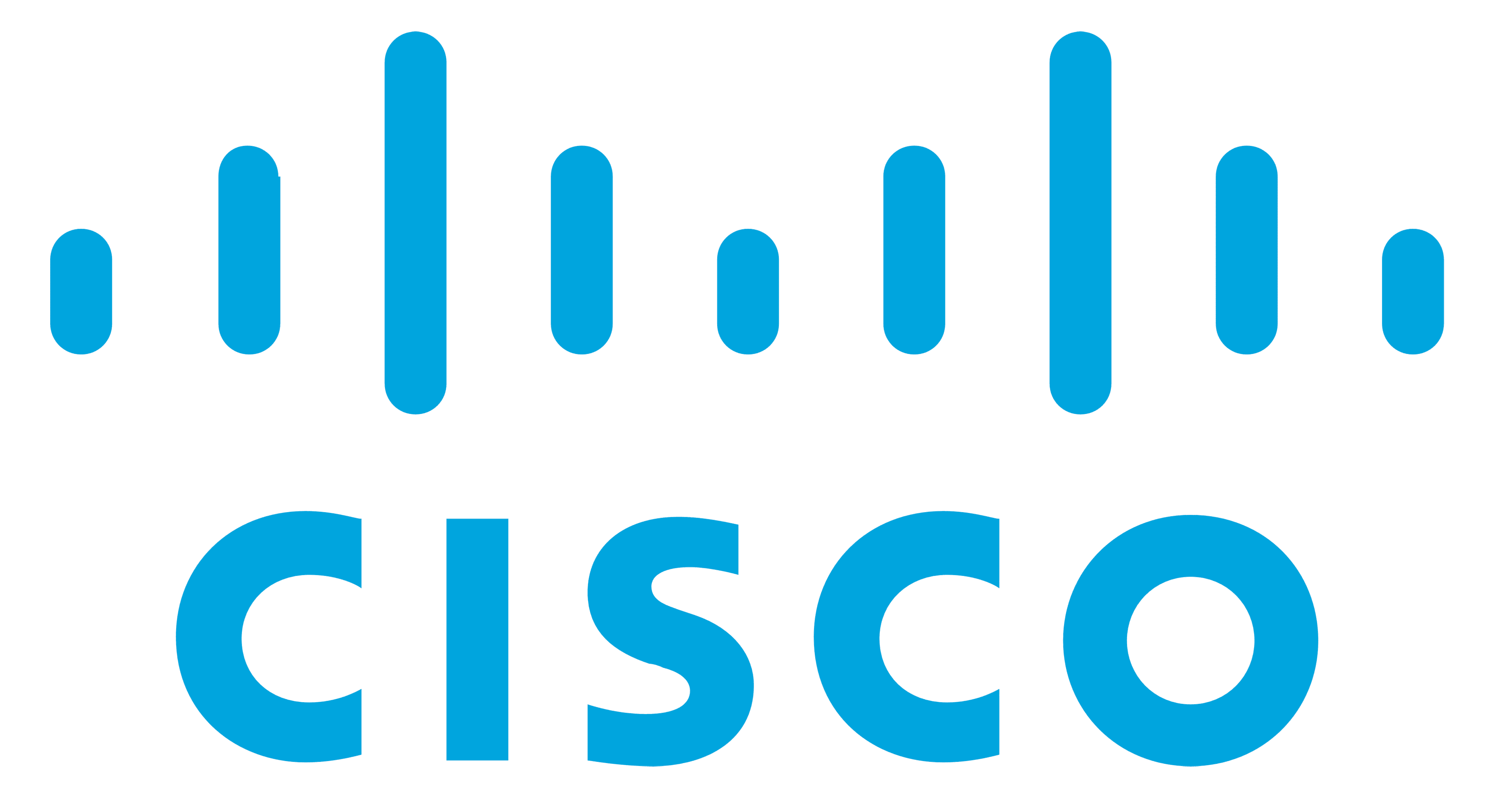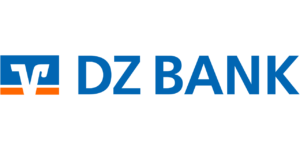
Cisco schützt die Brücke zum Möglichen durch ganzheitliche Absicherung menschlicher und nicht-menschlicher Identitäten
Der führende Netzwerkanbieter verbessert die Sicherheit und ermöglicht betriebliche Effizienz, indem er Privileged Access für menschliche Nutzer und Anwendungen zentral sichert und prüft
Zurück zum Anfang
Zusammenfassung
Cisco nutzt die CyberArk Identity Security Plattform, um seinen Kunden einen dynamischen Privileged Access mit einem Klick zu ermöglichen, den sie benötigen, um Serviceleistungen bereitzustellen und zu entwickeln und DevOps-Pipelines mit einer dynamischen Secrets Management-Strategie zu beschleunigen und zu sichern.
Unternehmensprofil
Cisco ist ein in Amerika ansässiges multinationales Unternehmen für digitale Kommunikationstechnologie mit Hauptsitz in San Jose, Kalifornien. Es ist in 180 Ländern auf der ganzen Welt tätig und erbringt Dienstleistungen im Rahmen von sechs strategischen Säulen: sichere, agile Netzwerke hybrides Arbeiten optimierte Anwendungserlebnisse End-to-End-Sicherheit Internet für die Zukunft und führende Fähigkeiten.
Mitarbeiter: 100.000
Herausforderungen.
Stellen Sie sich vor, wie groß die Verantwortung ist, die Kunden, Mitarbeiter, Vermögenswerte und Geschäftsabläufe eines der bekanntesten IT-Unternehmen der Welt zu sichern. Diese Verantwortung liegt bei Santosh Prusty, Senior Leader, Enterprise Security Team bei Cisco, und die Herausforderung ist erheblich. Es gibt 100.000 Cisco Mitarbeiter, Hunderte von Partnerunternehmen weltweit und über tausend Anwendungen, die das Unternehmen und die Kunden von Cisco unterstützen.
„Vor einigen Jahren haben wir uns die Lücken angesehen, die wir beim Identity- und Access Management hatten“, erklärt Prusty. „Wir hatten eine punktuelle Lösung, aber es gab weder einen Überblick darüber, wer was tut, noch eine Möglichkeit zur Überwachung. Daher waren wir auf der Suche nach einem Produkt, das diese Lücken schließt und unsere zukünftigen Anforderungen an Identity Security erfüllt.“
Seit über 50 Jahren ist Cisco der Eckpfeiler der meisten Technologienetzwerke und IT-Infrastrukturen von Unternehmen auf der ganzen Welt. Doch die Bedrohungslandschaft für Cisco und viele andere Unternehmen verändert sich, nicht nur im Hinblick auf traditionelle Bedrohungen durch Malware und Ransomware, sondern auch durch Angriffe auf die Lieferkette und die wachsende Bedeutung von Identity Security.
„In den letzten zehn Jahren haben die Veränderungen bei der Digitalisierung, der Automatisierung der Infrastruktur und der künstlichen Intelligenz die Art und Weise verändert, wie wir die gesamte Bedrohungslandschaft betrachten“, sagt Prusty. „Wenn wir unsere eigene Infrastruktur nutzen, fühlen wir uns sicher, weil sie innerhalb unseres eigenen Bereichs liegt. Aber mit verteilten Unternehmen, Mitarbeitern an entfernten Standorten und der zunehmenden Arbeit von zu Hause aus nimmt die Zahl der Verbindungen zu unserem Netzwerk von außen dramatisch zu. Wie können wir also sicherstellen, dass unsere Identitäten nicht gefährdet werden?“
Prusty führt an, was führende Threat Landscape Reports kontinuierlich belegen: 74 Prozent aller Sicherheitsverletzungen betreffen den menschlichen Faktor, wobei Menschen entweder durch Irrtum, Missbrauch von Privilegien, Verwendung gestohlener Zugangsdaten oder Social Engineering in Mitleidenschaft gezogen werden. „Früher konzentrierte sich unsere Identität hauptsächlich auf unseren Nutzernamen und unser Passwort“, so Prusty. „Jetzt umfasst sie mehrere Arten von Anmeldedaten, unsere Berechtigungen, unsere Notebooks oder andere Geräte, die wir für die Arbeit verwenden. Die Angriffsfläche entwickelt sich weiter. Und es sind nicht nur Menschen. Es gibt auch nicht-menschliche Identitäten, die jedes Unternehmen sichern, kontrollieren und managen muss.“
Cisco hat die Identity Security in drei große Säulen unterteilt: interne, externe und privilegierte Identität. Aber es gab eine Lücke bei der Überwachung von privilegierten Nutzersitzungen. Es gab keinen zentralen Überblick über Audit-Berichte oder darüber, wer was tat. Cisco ist ein großes, globales Unternehmen mit einer Vielzahl von Produkten, Dienstleistungen und Partnern. Es musste eine bessere Übersicht seines Bestands an privilegierten Zugriffsberechtigungen und Identitäten erhalten, um die Governance und Kontrolle zu verbessern.
Lösungen
Cisco entschied sich für CyberArk, weil CyberArk der bewährte und anerkannte Marktführer für Identity Security und Privileged Access Management (PAM) ist. Das Unternehmen benötigte eine Lösung, die menschliche und nicht-menschliche privilegierte Zugriffskontrolle und Identität in einer einheitlichen Plattform vereint, so dass zentral geprüft und sichergestellt werden kann, wer Zugriff auf was hat.
Die Implementierung der CyberArk Identity Security Plattform bei Cisco umfasst CyberArk Privileged Access Manager und CyberArk Secrets Manager, Self-Hosted (ehemals CyberArk Conjur Enterprise), wobei geplant ist, die nächste Generation von CyberArk Secrets Hub und CyberArk Dynamic Privileged Access Produkten in naher Zukunft einzusetzen. Cisco nutzt die umfangreichen Integrationsmöglichkeiten von CyberArk für die Integration in die Cisco-eigene Multi-Faktor-Authentifizierungslösung (MFA) Duo und für die Integration in andere Anwendungen wie SailPoint und Saviynt, um Identity-Governance-Prozesse zu automatisieren und das Onboarding von Nutzern und Secrets zu vereinfachen, die von Anwendungen innerhalb der gesamten DevOps-Pipeline verwendet werden. CyberArk Conjur wird bei AWS gehostet und in der unternehmensweiten hybriden und Multi-Cloud-Infrastruktur zur Verwaltung und Steuerung von Secrets Management eingesetzt. DevOps-Ingenieure erhalten damit einen einfachen Prozess, um hartcodierte Anmeldedaten durch APIs zu ersetzen, die die Secrets abrufen, die Anwendungen benötigen, um ihre Workloads in ihrer gesamten CI/CD-Pipeline (Continuous Integration und Continuous Delivery) auszuführen.
„Wir sind sehr stolz darauf, was wir mit unserem Programm erreicht haben. Die CyberArk Identity Security Plattform unterstützt uns dabei, menschliche und nicht-menschliche Identitäten in einer einheitlichen Lösung zu sichern und zu managen. Wir sichern 50.000 menschliche privilegierte Identitäten, isolieren und überwachen mehr als 25.000 Sitzungen pro Monat und produzieren mehr als tausend Stunden aufgezeichneter Sitzungen pro Tag. Was das Secrets Management angeht, archivieren und rotieren wir Zehntausende von Anmeldedaten, die von Anwendungen verwendet werden, und verwalten mehr als 40 Millionen API-Aufrufe von Secrets pro Monat.“ – Santosh Prusty, Senior Leader, Enterprise Security Team, Cisco
Cisco ist einer der größten Nutzer von Cloud-Infrastrukturen, darunter AWS, Azure und GCP, und betreibt darüber hinaus eine beeindruckende lokale Umgebung, was das Unternehmen zu einem echten Hybrid- und Multi-Cloud-Unternehmen macht. Daher benötigte das Unternehmen eine Lösung für Identity Security, die den menschlichen und nicht-menschlichen Zugriff auf verschiedenen Cloud-Plattformen und sogar vor Ort ganzheitlich sichern kann.
Der nächste Schritt konzentriert sich auf zwei Anwendungsfälle und Funktionen der CyberArk Identity Security Plattform: CyberArk Secrets Hub ermöglicht Betriebseffizienz und beschleunigt DevOps-Pipelines, indem es Entwicklern ermöglicht, native AWS- und Azure Secrets Management Services zu nutzen, mit denen sie vertraut sind, während das Sicherheitsteam die Anmeldedaten ihrer Anwendungen in CyberArk zentral verwaltet und prüft. In Zukunft wird CyberArk Conjur auch für die Entwicklung portabler Cloud-Anwendungen, die Bereitstellung von Cloud-Instanzen und die Verwaltung und Speicherung von API-Schlüssel-Secrets sowie Anmeldedaten von Anwendungen und Datenbanken eingesetzt. CyberArk Dynamic Privileged Access (DPA) trägt dazu bei, den operativen Fußabdruck und das Risiko im Zusammenhang mit ständigem Zugriff zu reduzieren, indem ein flüchtiger, zeitlich begrenzter Zugriff auf die virtuelle Maschine oder den Server mit attributbasierter Zugriffskontrolle erstellt wird. Sicherheitsteams initiieren dann isolierte Verbindungen mit Just-in-Time-Zugriff (JIT) für Administratoren, die ihre bevorzugten RDP- und SSH-Clients verwenden und risikobewusste adaptive Multi-Faktor-Authentifizierung (MFA) nutzen. Und das alles, ohne dass Agents oder VPNs erforderlich sind, um sichere, isolierte und überwachte Sitzungen zu vermitteln.
Ergebnisse
Für Cisco liefert CyberArk drei zentrale Werte:
- Verbesserung der Geschäftsabläufe, indem das Secrets Management der Endnutzer mit einem Klick ermöglicht wird.
- Verbesserte Sicherheitsverwaltung durch Überwachung und Steuerung des Nutzerzugriffs.
- Beseitigung hartcodierter Anmeldedaten in der gesamten DevOps-Pipeline und bei Steigerung der Entwicklerproduktivität, indem diese eine einfache Möglichkeit haben, APIs zu nutzen, um Secrets abzurufen, so dass sie sich auf wertschöpfende Aktivitäten konzentrieren können.
„Da wir nun alles auf einer Identity Security Plattform zusammenführen, sind wir im Hinblick auf das Management und die operativen Abläufe für Privileged Access sehr effizient“, erklärt Prusty. „Wir konnten unseren Administratoren und Entwicklern eine sichere und flexible Möglichkeit bieten, sich mit ihren Assets zu verbinden. Dies führte dazu, dass 50.000 privilegierte Konten mit CyberArk geschützt wurden und die Plattform 40 Millionen API-Aufrufe von Secrets pro Monat an Conjur [jetzt bekannt als Secrets Manager] verarbeitete, was für uns eine Voraussetzung ist. Wir haben auch mehrere Automatisierungen und Integrationen eingeführt, um das Onboarding von Nutzern und Anwendungen zu rationalisieren. Früher dauerte das Onboarding Wochen. Jetzt können wir dies reibungslos und automatisch in wenigen Minuten erledigen.“
Weitere Vorteile von CyberArk sind Transparenz und Überwachen. „Mit CyberArk wird jede Sitzung aufgezeichnet und gespeichert“, fährt Prusty fort. „Wir können zurückgehen und überprüfen, was passiert ist, wer sich in welcher Region wann und wie lange angemeldet hat. Dies gibt uns wertvolle Einblicke für Analysen und Audits.“
Cisco hat eine strategische Partnerschaft mit CyberArk geschlossen. Der CyberArk Blueprint und die CyberArk Success Plans haben beiden Seiten dabei geholfen, einen Plan aufzustellen, um kontinuierlich eine messbare Risikominderung zu erreichen, betriebliche Effizienz für Cisco zu ermöglichen und gemeinsam an der Umsetzung zu arbeiten. „In den letzten drei Jahren war CyberArk für Cisco von großem Nutzen“, bestätigt Prusty. „Jetzt planen wir die Weiterentwicklung unserer CyberArk Identity Security Plattform, um einige der neuen und fortschrittlichen Lösungen zu nutzen, die CyberArk entwickelt. Wir können Cisco ein Produkt wie CyberArk Dynamic Privileged Access anbieten und die Angriffsfläche erheblich reduzieren, indem wir Tausenden von Admin-Nutzern Just-in-Time Zugang statt ständigem Zugriff gewähren.“
„Durch den Einsatz des CyberArk Secrets Hub können wir Entwickler dort abholen, wo sie sind. Die Entwickler werden das native Secrets Management-Tool verwenden, während wir ihre Secrets in CyberArk zentral verwalten und prüfen.“ – Santosh Prusty, Senior Leader, Enterprise Security Team, Cisco
Eine dringende Herausforderung für Cisco ist das Lieferantenmanagement. „Cisco arbeitet mit Hunderten von Partnern in der Lieferkette auf der ganzen Welt zusammen“, so Prusty. „Diese Partner sind für das Geschäft von Cisco von zentraler Bedeutung, daher wollen wir sicherstellen, dass sie erfolgreich sind. Aber wir müssen uns überlegen, wie wir die Verwaltung und Steuerung der Partner in der Lieferkette vereinfachen und ihnen den Zugang ermöglichen können, den sie benötigen. Damit verbunden ist die Vereinfachung der Zusammenarbeit zwischen unserem technischen Support und den Verkäuferteams mit unseren Partnern, um nahtlose Transaktionen zu ermöglichen. Das sind Herausforderungen, bei deren Lösung wir uns mit CyberArk beraten.“
„CyberArk hat einige bedeutende Initiativen und Lösungsentwicklungen auf den Weg gebracht, wie den CyberArk Secure Web Browser, die Nutzung von KI auf der gesamten Plattform, die Verbesserung der Cloud-Sicherheit sowie den passwortlosen Zugang, und es ist großartig, Teil dieser Reise zu sein“, so Prusty abschließend. „Wir arbeiten an einer passwortlosen Strategie und ich freue mich zu sehen, dass CyberArk vorausschauend denkt und wir sind stolz darauf, mit ihnen zusammenzuarbeiten, um einige unserer spezifischen Anwendungsfälle zu verwalten und zu steuern.“
Die wichtigsten Vorteile
- Konsolidiert Privileged Access und Identity Security auf einer Plattform
- Bewältigt mit Secrets Manager die Größenordnung eines Unternehmens mit 40 Millionen API-Aufrufen von Secrets pro Monat
- 50.000 Konten mit Privileged Access geschützt
- Über 25.000 isolierte und überwachte Sessions pro Monat
- Über 1.000 Stunden aufgezeichnete Sessions pro Tag
- Ermöglicht schnellen, sicheren One-Click-Zugriff auf Geschäftssysteme
- Bietet eine Sicherheits-Roadmap für zukünftige Herausforderungen und Verbesserungen
Produkte und Dienstleistungen
CyberArk Privileged Access Manager
CyberArk Dynamic Privileged Access
Verwandte Kundenberichte
Sprechen Sie mit einem Experten
Die Schlüsselkomponenten einer Strategie zur Identity Security verstehen
Erleben Sie CyberArk Lösungen aus erster Hand
Finden Sie die nächsten Schritte auf Ihrem Weg zur Identity Security


